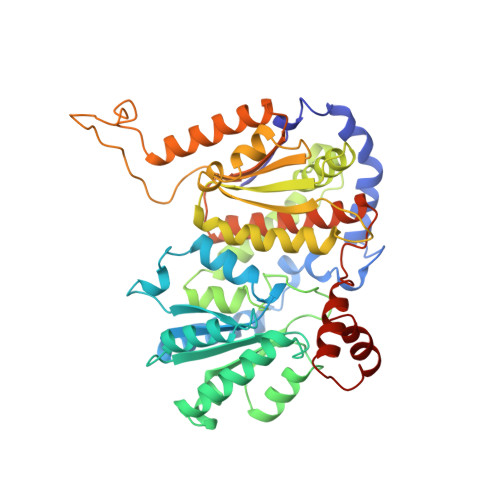The crystal structure of a multifunctional protein: phosphoglucose isomerase/autocrine motility factor/neuroleukin.
Sun, Y.J., Chou, C.C., Chen, W.S., Wu, R.T., Meng, M., Hsiao, C.D.(1999) Proc Natl Acad Sci U S A 96: 5412-5417
- PubMed: 10318897
- DOI: https://doi.org/10.1073/pnas.96.10.5412
- Primary Citation of Related Structures:
2PGI - PubMed Abstract:
Phosphoglucose isomerase (PGI) plays a central role in both the glycolysis and the gluconeogenesis pathways. We present here the complete crystal structure of PGI from Bacillus stearothermophilus at 2.3-A resolution. We show that PGI has cell-motility-stimulating activity on mouse colon cancer cells similar to that of endogenous autocrine motility factor (AMF). PGI can also enhance neurite outgrowth on neuronal progenitor cells similar to that observed for neuroleukin. The results confirm that PGI is neuroleukin and AMF. PGI has an open twisted alpha/beta structural motif consisting of two globular domains and two protruding parts. Based on this substrate-free structure, together with the previously published biological, biochemical, and modeling results, we postulate a possible substrate-binding site that is located within the domains' interface for PGI and AMF. In addition, the structure provides evidence suggesting that the top part of the large domain together with one of the protruding loops might participate in inducing the neurotrophic activity.
- Institute of Molecular Biology, Academia Sinica, Taipei, Taiwan 11529, Republic of China.
Organizational Affiliation:
















